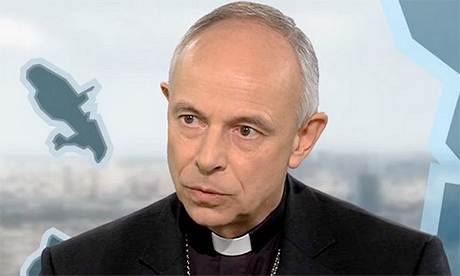Located in the Tarn region of southern France, the Archdiocese of Albi has been divided into 503 parishes since the Middle Ages.
Over the Pentecost weekend, however, Archbishop Jean Legrez, (pictured) completely re-organized them into 21 new parishes.
It is an impressive change.
In coming to this decision, the Archdiocese of Albi has followed a general trend among France’s 93 dioceses, two-thirds of which have already made major changes to parish boundaries and structures.
Sometimes, these developments are already longstanding. For example, in 1978, the Diocese of Le Havre, reduced the number of its parishes from 171 to 21.
Evidently, the objective is to better organize the parishes to deal with the decline in priest numbers as well as demographic changes.
“It reflects a sociological reality, not just the state of the church,” said Archbishop Legrez. “The point is to remain anchored in the real.”
Clearly, with only 70 active priests, many years have already passed since the 503 churches of the Tarn region have been regularly served.
Fifteen years ago, the parishes were already reorganized into 36 “parish sectors.”
Why this change now then? The primary reason is to meet the requirements of church law.
“At a canonical level, there is no such thing as a ‘parish sector,’” said Archbishop Legrez.
Yet, expressions of this kind have become widespread across French dioceses. A new jargon has emerged, which is not always clear to the faithful, let alone to people who are more distant from the church.
These expressions include “parish groups,” “parish sectors,” or even “local communities.” More recently, terms like “missionary pole” or even “radiating Eucharistic poles,” as in Rennes in northern France, have come into vogue.
“People are looking for different forms of territorial organization,” said Elisabeth Abbal, author of a doctoral thesis on parishes, who said that the variety of these expressions illustrates the “imagination” of dioceses in the face of adversity.
“Today, people are prioritizing the ‘pole’ model, namely a central location towards which the faithful need to converge,” she said.
However, this model also poses other problems, Abbal points out, beginning with the fact that it ends up creating ecclesial deserts.
“People living in isolated territories also have a right to evangelization,” she said.
While local churches have shown great creativity, it is often because they are forced to do so.
Nevertheless, this has not stopped certain bishops from displaying great audacity in their endeavors to meet the challenges.
In some places, the “new parishes” which were created 15 or 20 years ago, which were in fact too big, have also now been changed.
The Diocese of Mende, which includes the Department of the Lozère in France’s Massif Central region, is no longer divided into merely five parishes.
At the end of 2017, the Diocese of Rouen decided that some parts of its territory would no longer even have the status of parishes.
Archbishop Dominique Lebrun declared them “mission lands” to lighten the load of his priests. Continue reading
- Image: la-Croix
